What Is Venetian Plastering
Venetian plastering is a timeless decorative technique that adds a touch of elegance and sophistication to any space.
Originating in Italy, this method involves applying multiple layers of plaster to create a smooth, polished finish that resembles the look of marble.
We will explore the benefits of Venetian plastering, the process of how it is done, the materials used, the different finishes available, and how to properly maintain this stunning wall treatment.
Let’s dive in and discover the art of Venetian plastering!
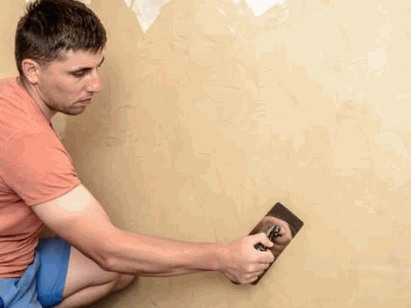
What Is Venetian Plastering?
Venetian plastering is a decorative finish technique originating in Italy that involves applying a polished, smooth surface using a trowel over multiple layers of lime-based plaster.
The artistry and craftsmanship involved in Venetian plastering truly elevate the appearance of any space, bringing a touch of luxury and sophistication. The high sheen finish achieved through meticulous application and polishing reflects light beautifully, creating a sense of depth and warmth. This traditional Italian technique not only adds texture and visual interest to walls and ceilings but also imparts a sense of timeless elegance to interior design. The versatility of Venetian plaster allows for various application methods, from creating subtle textures to intricate patterns, making it a sought-after choice for those seeking a unique and opulent look.
Discover: Can You Paint On Plaster
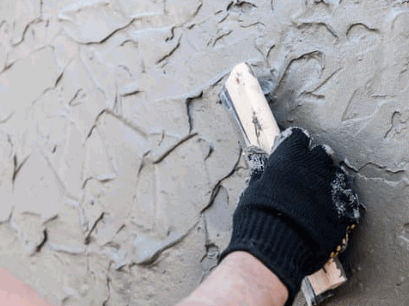
What Are The Origins Of Venetian Plastering?
Venetian plastering traces its origins back to the historic buildings of Europe, characterized by artisanal techniques that imbue spaces with old-world charm and an artistic touch.
The technique of Venetian plastering emerged during the Renaissance period, blending seamlessly with the architectural styles of the time to create luxurious and timeless interiors. Craftsmen in Italy perfected the art of applying multiple layers of slaked lime and marble dust, meticulously polishing the surface to achieve a smooth, glossy finish that mimicked the appearance of marble.
This meticulous process not only enhanced the durability of structures but also added a sense of sophistication and elegance to palaces, villas, and churches across Europe. Over the centuries, Venetian plastering has evolved to incorporate modern materials while preserving its traditional charm and intricate design details.
What Are The Benefits Of Venetian Plastering?
Venetian plastering offers a seamless finish that combines durability with aesthetic appeal, making it a preferred architectural element crafted by skilled artisans for treating walls and concealing surface imperfections.
The technique involved in Venetian plastering involves the application of multiple layers of lime-based plaster, which are then burnished to create a smooth and luxurious surface. This artisanal process not only results in a visually striking finish but also adds a layer of durability to the walls, making them more resistant to wear and tear. The artistic craftsmanship required in applying Venetian plaster allows for endless customization and variations, ensuring that each space receives a unique and personalized touch that enhances its overall appeal.
Aesthetics
The aesthetics of Venetian plastering are characterized by a high-quality, timeless look with a variety of color variations, offering an elegant and versatile choice for modern interior designs.
The refined finish of Venetian plastering lends a touch of sophistication to any space, creating a luxurious ambiance that is both classic and contemporary. The depth and texture of the plaster contribute to a sense of depth, adding dimension and character to walls and ceilings. Its ability to mimic the look of natural materials like marble or stone enhances the overall aesthetic appeal, making it a popular choice for those seeking a chic and polished interior. The multidimensional effect of Venetian plaster can truly transform a room, showcasing a unique blend of tradition and innovation in design.
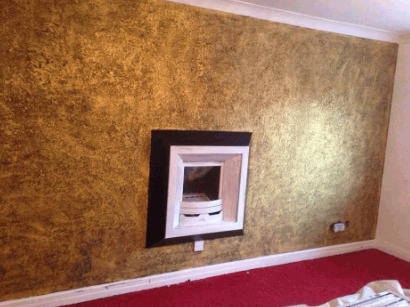
Durability
Venetian plastering is prized for its durability, achieved through a protective coating that enhances its high sheen, water-resistant properties, and breathable finish.
This protective coating not only lends a luxurious shine to the walls but also acts as a barrier against moisture and everyday wear and tear, making Venetian plaster a practical choice for high-traffic areas. The water resistance of Venetian plaster means that it can withstand splashes and spills, allowing for easy maintenance and cleaning. The breathable nature of the finish prevents any trapped moisture, reducing the risk of mold or mildew growth, and ensuring the longevity of the plaster over time.
Versatility
Venetian plastering showcases versatility by utilizing natural materials, color pigments, and wax finishes to create unique patterns that offer design flexibility in various interior spaces.
The use of different materials like marble dust, slaked lime, and acrylic resins in Venetian plastering allows for a wide range of textures and finishes to be achieved. By mixing color pigments into the plaster, a myriad of hues and shades can be produced, enabling endless creative possibilities in decor. Incorporating various wax finishes further enhances the visual appeal and durability of the plaster, making it suitable for both traditional and contemporary design schemes.
Easy Maintenance
Venetian plastering requires minimal maintenance but can be easily refinished, repaired, or restored to align with evolving design trends and maintain its luxurious appeal.
It is essential to keep Venetian plaster surfaces clean by regularly dusting or wiping them with a soft cloth to prevent build-up that could affect the finish. In case of minor damages like scratches or dents, can be easily repaired by applying a fresh coat of plaster and blending it in seamlessly. For more significant issues, such as stains or cracks, professional restoration services can be utilized to ensure the integrity of the plaster is maintained. By staying mindful of these maintenance practices, the timeless beauty of Venetian plaster can be preserved for years to come.
How Is Venetian Plastering Done?
The process of Venetian plastering involves meticulous surface preparation, followed by the application, polishing, and burnishing of the plaster to create a flawless finish that conceals surface imperfections.
To begin, the surface must be cleaned thoroughly to remove any dust, grease, or debris that could affect the adhesion of the plaster. Once cleaned, a primer is applied to enhance the bond between the substrate and the plaster.
Next, the Venetian plaster is troweled onto the surface in thin, multiple layers, allowing each layer to dry before applying the next. After the plaster is dry, it is polished with fine-grit sandpaper to smooth out any irregularities.
The surface is burnished using a specialized tool to achieve a luxurious, glossy finish.
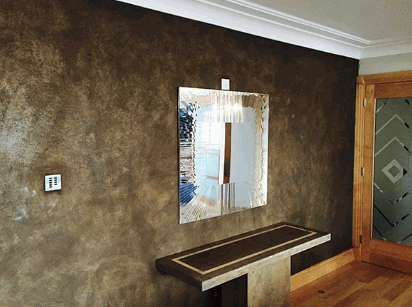
Surface Preparation
Surface preparation is a crucial step in Venetian plastering, requiring attention to detail to ensure depth, sophistication, and the expertise of skilled artisans for flawless application.
The process of preparing the surface sets the stage for the visual appeal and durability of the final plaster finish. Skilled artisans understand the significance of meticulously prepping the surface, ensuring that it is smooth, clean, and free from any imperfections before applying the plaster.
By taking the time to properly prepare the surface, artisans can enhance the depth and richness of the plaster, creating a luxurious and sophisticated look that is both visually stunning and long-lasting. This essential step is where the magic begins, laying the foundation for a flawless finish that truly showcases the beauty of Venetian plastering.
Applying The Plaster
The application of Venetian plaster involves layering the material with artistic precision, requiring multiple layers to be expertly applied to showcase the craftsmanship and artistry behind the technique.
Artisans who work with Venetian plaster must possess a keen eye for detail and a steady hand to achieve the desired effect. Each layer must be carefully applied and smoothed out to create a seamless finish. The process of building up the layers allows for depth and richness in the final appearance, giving walls and surfaces a luxurious texture. By skillfully applying multiple layers, the unique color variations and subtle sheen of Venetian plaster come to life, transforming plain walls into works of art.
Polishing And Burnishing
The final stages of Venetian plastering involve meticulous polishing and burnishing to achieve a high sheen that exudes elegance and premium quality, enhancing the overall aesthetic of the surface.
During the polishing stage, the artisan uses a specialized tool to smooth and refine the surface, eliminating any imperfections and creating a seamless finish. This process not only enhances the visual appeal but also adds depth and dimension to the plaster, giving it a luxurious appearance.
Once the surface has been polished, the burnishing step intensifies the sheen by buffing the surface with a soft cloth or trowel, creating a shiny, mirror-like effect that truly elevates the final look of the Venetian plaster.
What Materials Are Used For Venetian Plastering?
Venetian plastering utilizes a blend of materials such as lime plaster, marble dust, pigments, and sealants to create a luxurious finish that enhances the visual appeal of interior spaces.
Lime plaster, a key component in Venetian plaster, offers exceptional durability and breathability, allowing for moisture to escape, thus reducing the risk of mold and mildew. Marble dust, finely ground to a smooth consistency, adds a unique depth and texture to the plaster finish. The pigments provide a wide range of color options, allowing for customization to suit any design aesthetic. Sealants play a vital role in protecting the plaster from moisture, stains, and scratches, ensuring its longevity and preserving the beautiful aesthetic quality of the finish.
Lime Plaster
Lime plaster is a fundamental component of Venetian plastering known for its ability to conceal surface imperfections while showcasing high-quality craftsmanship in the final finish.
Its unique properties make it an ideal choice for achieving a smooth and luxurious interior or exterior surface. When applied in thin layers, lime plaster has a natural translucency that adds depth and texture to the wall, creating a visually stunning effect. Lime plaster is highly durable and breathable, allowing moisture to evaporate easily and preventing issues such as mold growth. The material’s versatility also enables artisans to create various effects, from polished marble-like finishes to rustic textures, enhancing the overall aesthetic appeal of any space.
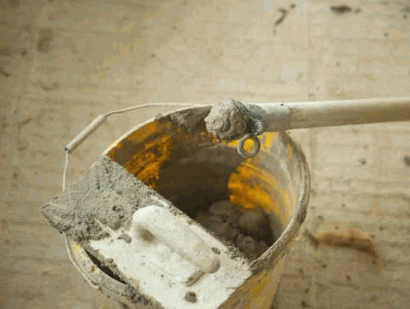
Marble Dust
Marble dust is a key ingredient in Venetian plastering that adds texture and depth to the finish, creating a seamless and elegant surface that embodies sophistication.
The incorporation of marble dust in Venetian plaster not only enhances the aesthetic appeal but also provides practical benefits. By mixing marble dust with lime plaster, artisans can achieve a rich and lustrous texture that cannot be replicated with other materials. The fine particles of marble dust contribute to the smoothness of the finish, resulting in a polished surface that exudes luxury and refinement. This mixture allows for intricate designs and detailing, making Venetian plaster a versatile and timeless choice for interior decor.
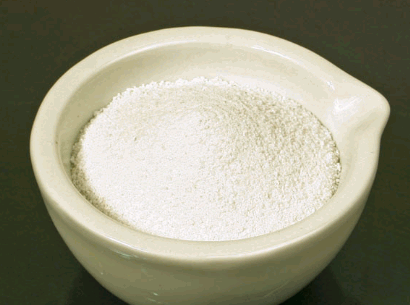
Pigments
Pigments are essential in Venetian plastering for introducing color variations, and artistic flair, and creating unique patterns that add visual interest to the finished surface.
These pigments play a crucial role in transforming a plain wall into a work of art, allowing for endless customization and design possibilities. By carefully selecting the right combination of pigments, artisans can achieve a wide range of colors, from subtle earth tones to vibrant hues, enhancing the overall aesthetic of the space.
The use of pigments also contributes to the depth and texture of the plaster, creating a rich and dynamic surface that catches the eye and invites touch. Through skillful application techniques, these pigments can be manipulated to produce stunning effects, such as marbling, veining, or even metallic finishes, adding a touch of luxury and elegance to any room.
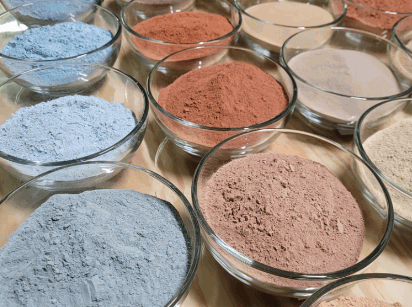
Sealants
Sealants play a critical role in Venetian plastering by providing a protective coating that renders the surface water-resistant, easing maintenance and ensuring long-lasting durability.
By sealing Venetian plaster surfaces, you not only enhance their ability to repel moisture but also simplify the cleaning process. Sealants act as a shield against stains and dirt accumulation, allowing for easy wiping and upkeep. This protective layer serves as a barrier that shields the underlying plaster from the elements, ultimately extending the lifespan of the finish. Sealants contribute to the overall aesthetic appeal by accentuating the depth and richness of colors in the plaster, enhancing the visual impact of the design.
What Are The Different Finishes Of Venetian Plastering?
Venetian plastering offers a range of finishes including Marmorino, Tadelakt, Scagliola, and Sgraffito, each contributing unique textures and design elements to interior spaces.
Marmorino, known for its smooth and polished surface, adds a luxurious touch to walls and ceilings, creating a sophisticated and elegant ambiance.
Tadelakt, on the other hand, originates from Morocco and is renowned for its waterproof properties, making it ideal for bathrooms and humid environments.
Scagliola replicates the look of marble with intricate veining, bringing a touch of opulence to any space.
Sgraffito, characterized by its etched designs revealing contrasting colors, adds a playful and artistic dimension to interiors, making a bold statement in any room.
Marmorino
Marmorino is a popular finish in Venetian plastering known for its textured appearance, high sheen, and ability to create a seamless finish that adds depth to interior surfaces.
This distinctive finish is achieved by combining slaked lime with finely ground marble powder, resulting in a luxurious and elegant look. The textured appearance of Marmorino adds a tactile dimension to walls, bringing a sense of warmth and sophistication to any space. Its high sheen reflects light beautifully, creating a dynamic interplay of light and shadow that can transform the ambiance of a room. Marmorino’s seamless finish not only enhances the aesthetic appeal of interior surfaces but also provides durability and longevity, making it a practical choice for both residential and commercial spaces.
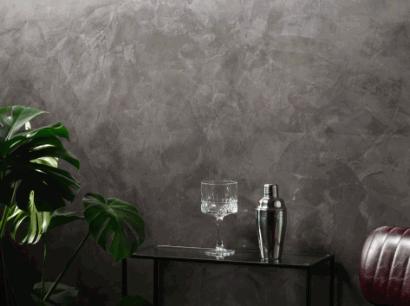
Tadelakt
Tadelakt, a distinctive Venetian plastering finish, is recognized for its water-resistant properties, luxurious appearance, and suitability for treating walls in various settings.
This unique technique originating from Morocco involves the application of lime plaster mixed with black soap and polished with river stones or agate stones. The combination of these materials not only creates a beautiful, glossy finish but also provides a protective barrier against water damage, making it ideal for use in wet areas such as bathrooms, kitchens, and even outdoor spaces.
The shimmering effect produced by Tadelakt adds a touch of elegance and sophistication to any interior, transforming ordinary walls into stunning focal points that are both visually striking and durable.
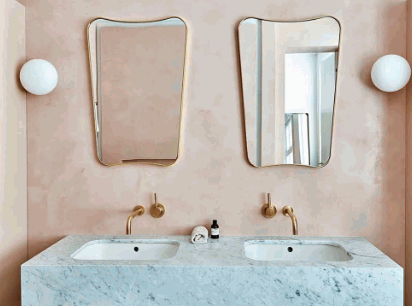
Scagliola
Scagliola is an elegant finish in Venetian plastering, renowned for its premium quality, sophisticated appearance, and the timeless elegance it introduces to interior spaces.
Its distinctive marbling effect, intricate patterns, and rich color variations elevate the overall aesthetic of any room. The meticulous craftsmanship involved in creating Scagliola further enhances its luxurious appeal, providing a sense of opulence and refinement. The durability of this finish ensures that it will stand the test of time, maintaining its beauty for years to come. By incorporating Scagliola into interior design, one can achieve a sense of sophistication and grandeur that exudes a classic charm.
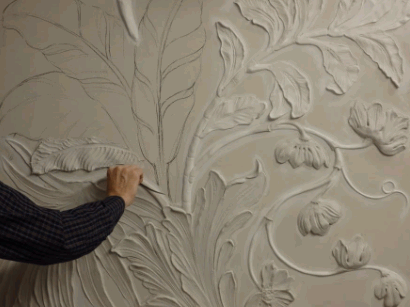
Sgraffito
Sgraffito, a custom finish in Venetian plastering, allows for creative expression through custom designs, adding an artistic touch that personalizes interior spaces with unique patterns.
This artistic technique involves carefully layering different colored plaster atop one another and then scratching through the top layer to reveal the contrasting color below. This process creates a visually dynamic and textured surface that can be tailored to suit various aesthetic preferences. By utilizing Sgraffito, decorators and homeowners alike can transform dull walls into captivating focal points that reflect their individual style and personality.

How To Maintain Venetian Plastering?
Maintaining Venetian plastering involves regular dusting and cleaning to preserve its appearance, addressing damages promptly through touch-ups, and considering refinishing or repair for extensive wear or discoloration.
- Regular dusting is crucial to prevent dust and dirt buildup on the smooth surface of Venetian plaster, which can dull its shine and beauty over time.
- Periodic cleaning with a mild soap and water solution helps maintain the integrity of the finish.
- When minor damages such as scrapes or scratches occur, swift touch-ups using a matching plaster mixture can seamlessly restore the surface.
- For larger cracks or significant wear, professional refinishing or repair may be needed to ensure the longevity of the Venetian plaster.
Regular Dusting And Cleaning
Regular dusting and cleaning are essential for maintaining the pristine appearance of Venetian plastering, ensuring that the finish retains its luster and beauty over time.
By regularly removing dust and debris from the surface of Venetian plaster, you prevent these particles from settling into the textured finish and dulling its shine. Dusting not only preserves the aesthetic appeal of the plaster but also protects it from scratches and abrasions. Cleaning the plaster with a gentle, non-abrasive cleaner helps to remove any dirt or grime that may accumulate over time, keeping the surface looking fresh and vibrant. To effectively maintain Venetian plaster, consider using a soft, damp cloth for dusting and a mild soap solution for periodic cleaning.
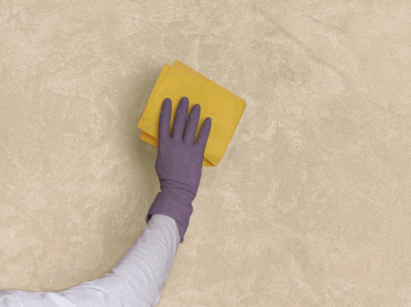
Avoid Harsh Chemicals
It is crucial to avoid harsh chemicals and abrasive cleaning agents when caring for Venetian plastering to prevent damage and preserve the integrity of the finish for long-lasting beauty.
Instead, opt for gentle cleaning methods to maintain the luxurious look of Venetian plaster. Regular dusting with a soft cloth or duster can help keep the surface clean without causing scratches or dulling the finish. For tougher stains, consider using a mild soap solution and warm water to gently clean the surface. Microfiber cloths or soft sponges can be effective in removing dirt without damaging the delicate finish. By adopting these gentle cleaning practices, you can ensure the longevity and aesthetic appeal of your Venetian plaster.
Touch Up Any Damages
Timely and precise touching up of any damages in Venetian plastering is vital to prevent further deterioration, ensuring that the finish remains flawless and maintains its original allure.
Promptly addressing any imperfections in Venetian plaster not only preserves the aesthetic appeal of the surface but also extends its longevity. By promptly identifying and attending to any damages, you can prevent small issues from escalating into more significant problems.
Touch-ups can be done using specialized tools and materials that match the original finish, such as applying a fresh layer of plaster, smoothing out cracks, or blending edges to seamlessly integrate the repair. Regular maintenance and touch-ups will help to protect the integrity of the plaster and keep it looking its best.

